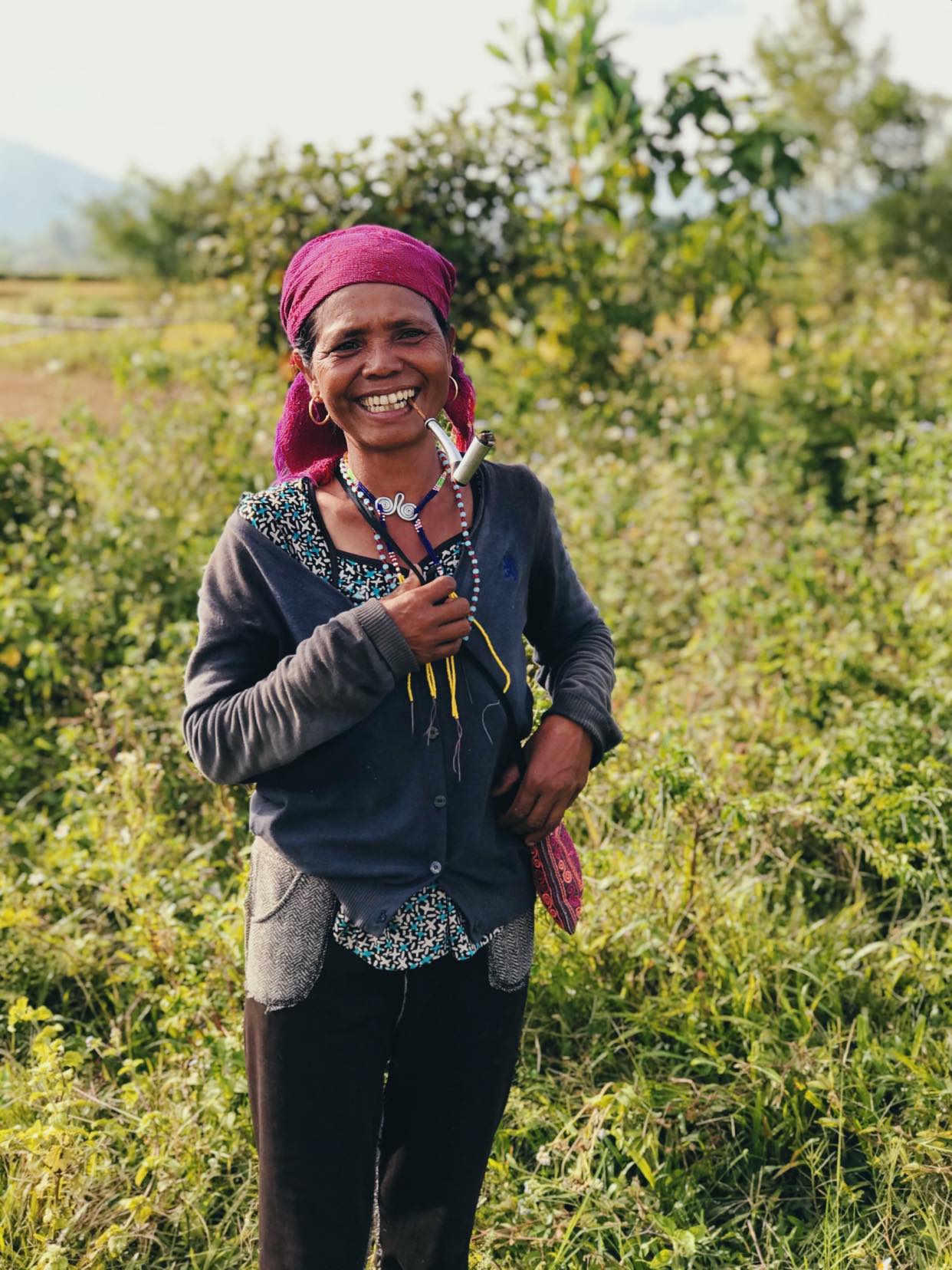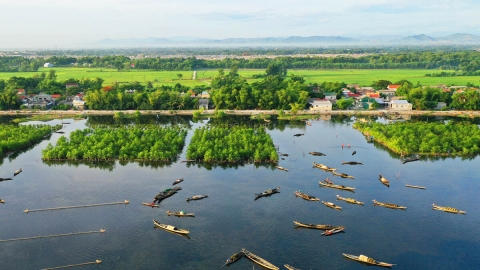A Luoi is rolling back in the afternoon.
Rain after rain, sunshine every hour
Waving white wipes up the slope
A Lin, A Sap go to a foreign land
Years go by, years come back
(Back to A Luoi, Nguyen Khoa Diem)

Photo: Tran Dinh Duc Hieu
When mentioning A Luoi, people often immediately think of the fierce war years when this place became a shield to protect the Revolutionary Road from the rain and sun, and of the heroic stories of Mrs. Kan Lich or Mr. A Nun.…In the years 2006-2014, a group of writers from Thua Thien-Hue came to Hong Bac commune and A Hua village (Nham commune) to carry out a magazine special about A Luoi - where the place name A Bia hill awakens heroic and tragic pasts. In mid-May 1969, this place was the site of a battle between the Liberation Army of South Vietnam and the US army. After ten days of fighting, A Bia peak was bombed and shelled, leaving only dry and burnt tree trunks; the US soldiers called this place Hamburger Hill. A Luoi is truly a land of history.
But, finding our way back to A Luoi, we will know that this land has much more to offer than that. This place is not just a wall engraved with memories of bombs and war. It is the heroic epics of the past, such as the story of To Rut slaying a hawk to save Kalang Batung to become his wife. It is the traditional festivals and rituals about the Saints, about Giang and love. It is also the survival battle of many generations of A Luoi people to protect the mountains, the forests, and the villages for thousands of years. If we compare A Luoi to the muse of Hue, then when we sit down and listen, what stories will she tell us?
She told about green forests and deep mountains, about deep waterfalls and high passes, about flowing rivers.
The overlapping steps
Mountain steps
A Co looked up at the clouds and wind
Miss Ca Va stands tall on an elephant's back
Slope of the sinewy cat hand grip
An Ho, a thousand years of rain and wind
(Nguyen Khoa Diem)
When coming to Hue, people are often overwhelmed by the temples, citadels, heritages, and treasures, few people remember a faraway place. For tourists, it seems that A Luoi has nothing attractive to explore. However, if you come here yourself, everyone will see that those thoughts are probably wrong. "The golden capital of a capital" - someone commented about A Luoi like that. Leaving Hue, going to the West, going up the mountain, A Luoi welcomes the children returning to the motherland and the travelers visiting by winding mountain passes, in the deep blue Truong Son land and sky.
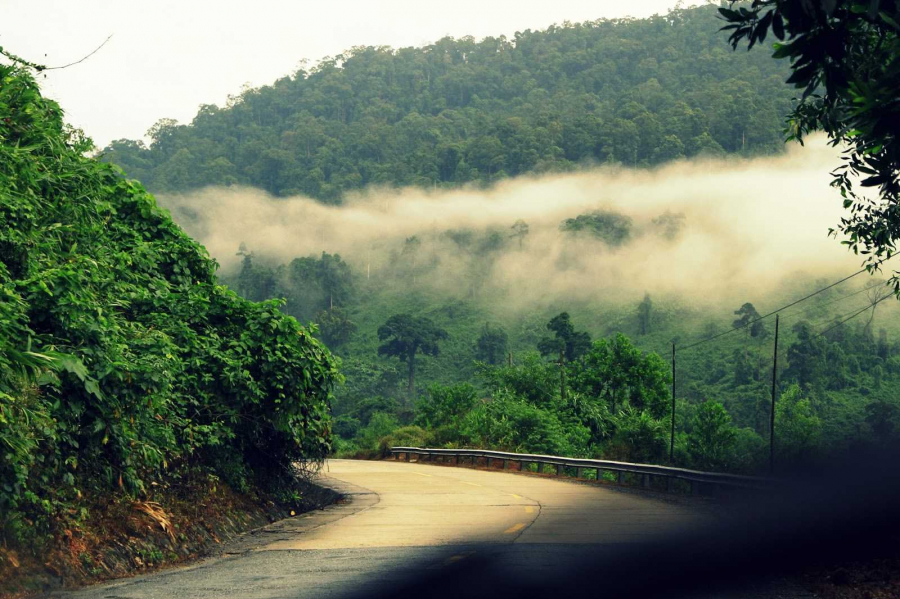
Located at the end of Highway 49, about 70 km from Hue, A Luoi has a vast hilly area with endless coffee hills. Looking up at the sky, you can only see clouds like waterfalls, rolling down, dyeing the mountain tops white. In the past, to get to A Luoi, you had to cross mountains and forests. Now, the road to A Luoi is much different. The winding and dangerous A Co Pass (also known as Ma Oi Pass) has now been lowered and many overpasses have been built across deep ravines. On the wide, flat asphalt road over Bach Ma Mountain or along Ho Chi Minh Road, as far as the eye can see are Loi khoai trees with dark red leaves, standing alone and proud among the green. Countless carpets of bright yellow flowers cling to the mountain roofs, looking like a patch of color to accentuate the characteristic wild color. The rolling hills, the crisscrossing streams and rivers, the rugged roads, all seemed to sway and glide around the narrow waist, like a free and powerful dance blowing into the soul. Occasionally, there was the sound of a lost bird calling from behind the old forest, then the call gradually faded away, leaving a very small echo like a lingering feeling in the silence.

Photo: Tran Dinh Duc Hieu
Like many other areas in the interior, A Luoi has only two seasons: rainy season and dry season. Starting from July, the rains often come down so quickly that people don’t have time to stop their vehicles or put on raincoats before they are soaked. A Luoi’s rain is not drizzling, coming and going quickly like Da Lat’s rain. At the end of the year, A Luoi’s sky is always covered with heavy clouds, the rain pours down in torrents and loudly, strong and majestic like the nature of this place.
A Luoi leans against the majestic Truong Son range. This is the source of five large rivers, "five rivers spread out like five fingers wide open and flowing". Of which, two rivers flow to Laos, A Sap and A Lin. Three rivers flow to Vietnam, Dakrong, Bo and Ta Trach (left branch of Huong River). Not only rivers, A Luoi also has many streams, clear streams lying among the deep green of the forest, flowing day and night through the rocky slopes, sounding like the sound of a mother singing a lullaby to her child to sleep on her back.
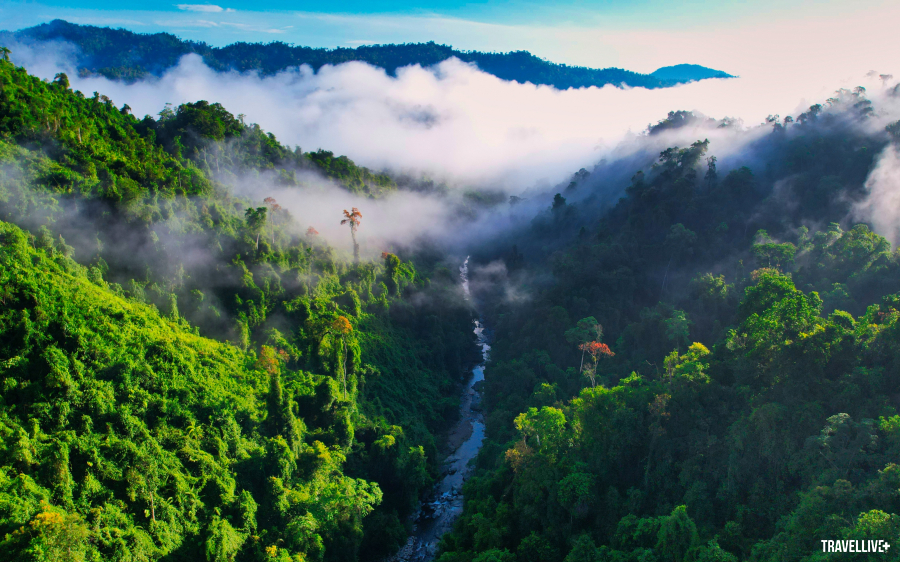
Photo: Tran Dinh Duc Hieu
In the morning light, I stopped by the Par Le stream (Hong Ha), the water was clear and cool. Thousands of ferns grew along the stream. Bushes of wild banana trees with dark brown leaves crowded the clear water. At this moment, I was alone in the middle of the forest. There was a sound of breathing in the old forest. There was a shadow of a person carrying the sun to the fields…(A Luoi diary, Le Vu Truong Giang, 2016)
The story of A Luoi stretches out like the deep green mountains and forests, stretching on and on without knowing where the end is. If I were to ask her to continue, what stories would she tell me?
She tells about the origin of the nation, about the legends of the epics, about the cultural flame embraced in a new era.
A Luoi has many unique cultural colors in terms of customs and lifestyles of the ethnic minorities here. These distinct cultural nuances seem not to have been properly honored, but still quietly bloom in a space imbued with its own legendary flow.

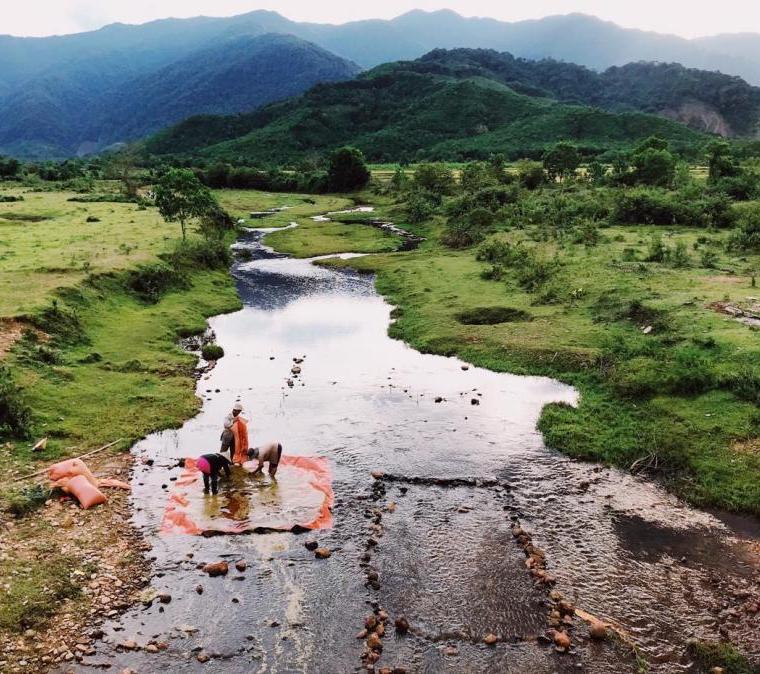
In A Luoi, there are many ethnic groups living together, such as Pa Co, Ta Oi, Co Tu, Pa Hi and Bru-Van Kieu, but there is one very special thing: every ethnic group often takes the surname Ho as their surname. Going back in time, we know that the genealogy of the people here is kept in baskets so it is easy to lose and wander during wartime, so many people only remember their first names but their last names are lost. Later, the A Luoi people took Uncle Ho's name as their surname, to remember the precious grain of salt that Uncle Ho brought here during the chaotic days, so that the skin of the A Luoi people is less pale, and the blood of the A Luoi people is more red. Not only preserving the lesson of drinking water, remembering its source, the culture and beliefs here also preserve countless strange and fascinating stories. Opening the door to the lifestyle of the A Luoi people, we enter a world filled with dances in bustling festivals, gratitude to Mother Rice and Mother of Crop Varieties, love songs in the nights of going to the fields of sim and oral stories patched together from the main characters of the A Luoi mountains and forests...
And that strange new world has countless magical things. Those are the nights by the fire in the Rong house, the village elder with a deep, sacred voice stands up to tell the epicAchât- the heroic epic of the Ta Oi people. That is the concern when the performing arts and folk music values of the A Luoi people are gradually being eroded and forgotten. That is the ancient story about the origin of the Pa Co people and why they now consider dogs as their totem. That is the journey to clarify the spiritual cultural symbolA poalfull of mystery. Those are also the very unique dishes of the people here, in which "hidden in each ingredient, each dish is a cultural story, a matter of belief".

A resident of A Luoi. Photo: Shi Jang
The A Luoi people not only shine in ancient stories, their beauty also lies in their tireless work day in and day out. The people here have a long-standing traditional craft, which is Zeng weaving. Zeng weaving has been passed down through many generations, in which the role of women - mothers - is extremely important. Because in their culture, every girl growing up must know how to weave Zeng cloth, so that when she reaches marriageable age, she can weave it as a gift for her husband's family. The A Luoi people use natural cotton fibers, dyed with many colors from tree bark or brown roots to weave Zeng into costumes. Clothes made from Zeng weaving techniques are not only products serving daily essential needs, but also have value as a work of art carrying unique cultural characteristics. They embroider on fabric various patterns simulating streams, steep slopes, trees, forest birds, everyday objects, stars in the sky, etc. In the cultural and spiritual life of the A Luoi people, these symbols represent the desire for harmony between heaven and earth and humans.
The pinnacle of Zeng weaving art, in addition to the unique pattern creations, is the technique of inserting beads combined with the color system on the fabric. Inserting beads into the fabric is a complicated process that requires the weaver to have high skills. In 2016, Zeng weaving was recognized by the Ministry of Culture, Sports and Tourism as a National Intangible Cultural Heritage. When A Luoi people sit to weave Zeng, they sing folk songs loudly. The sound of spinning thread, the sound of the shuttle turning, combined with the long chanting, creates a very unique A Luoi echo, easily making people immersed.
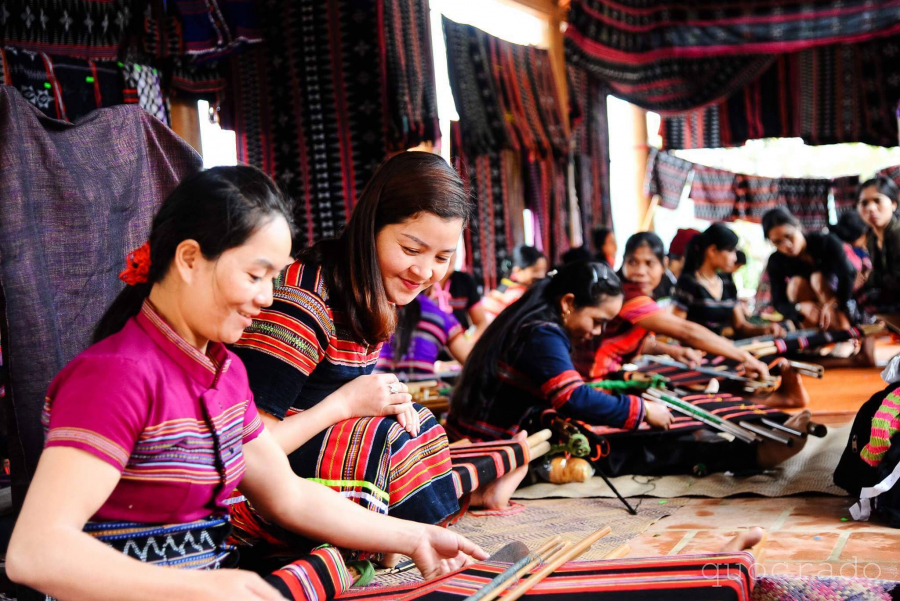
Integrating with the new era that is constantly developing, A Luoi today not only holds those beautiful cultural features for itself, but is also gradually developing the tourism industry, promoting tourist attraction. Here, there are now many accommodation services (from hotels, motels to homestays, ...) along with two community cultural tourism villages. Visitors to A Luoi can experience life in stilt houses built in traditional architecture, such as the Guol house of the Co Tu ethnic group, the Rong house of the Ta Oi ethnic group, the Dai house of the Pa Co ethnic group; and immerse themselves in the atmosphere of festivals with bright lights, such as the A Rieu Car Festival, the A Rieu Ada Festival (New Rice Festival), the A Rieu Piing Festival (Ancestor's death anniversary, gathering of graves), the Harvest Festival (to thank heaven, earth and gods) ...
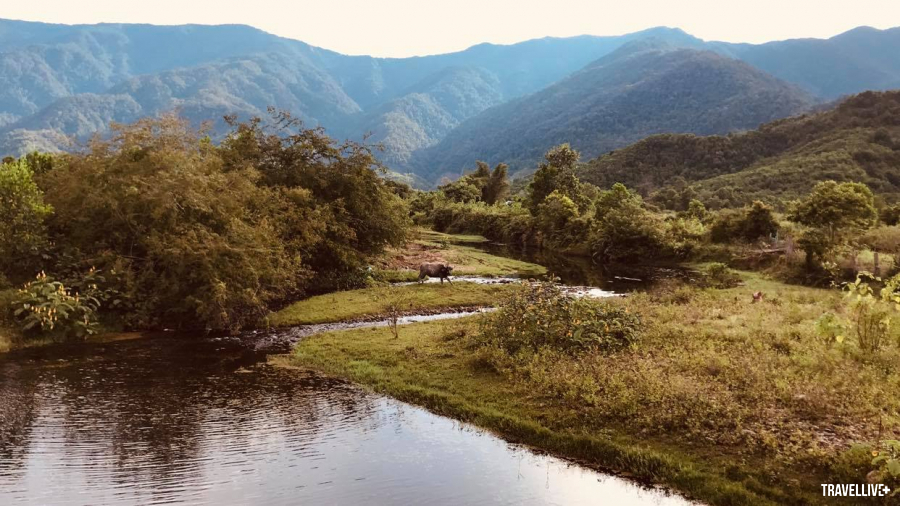
Photo: Shi Jang

Photo: Shi Jang
Just a few lines of words cannot fully describe the vastness, the poetic love of A Luoi and the people here. If you have never been there, all you will see is a corner of A Luoi sky. That corner can reveal the green of the mountains and forests, the white of the clouds and sky, the brilliance of festivals filled with meaningful songs... But you have to go to Hue, go to the West, to A Luoi, to truly immerse yourself in the majestic nature with high waterfalls and wide ranges, in the songs and melodies, in the cultural identity that penetrates the human heart.
Let's sing loudly on this river junction
Welcome the season of love
The season of ecstatic sim
Sing to become husband and wife
Sing for the prosperity of the city
Sing to the mythical gourd
A Sap A Lin source
Break out crowded
our people
(The epic poem of our fellow countrymen, A Luoi),Pham Nguyen Tuong)





